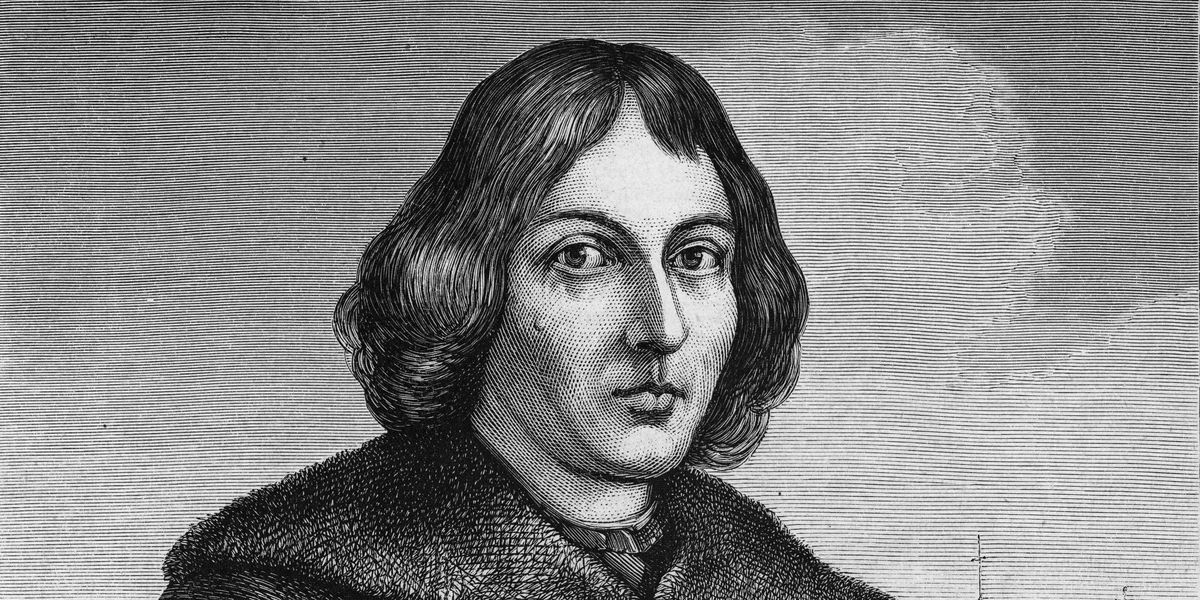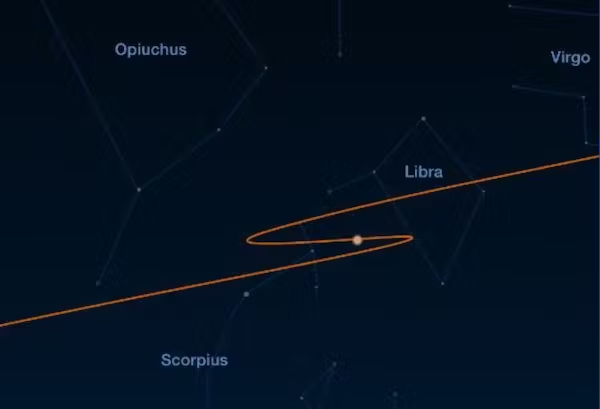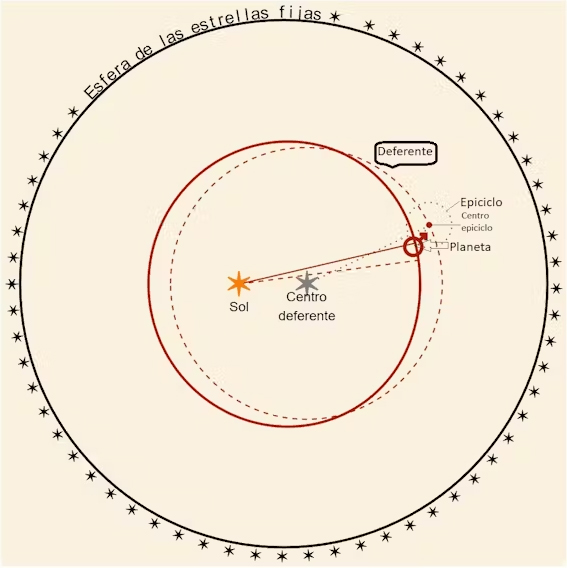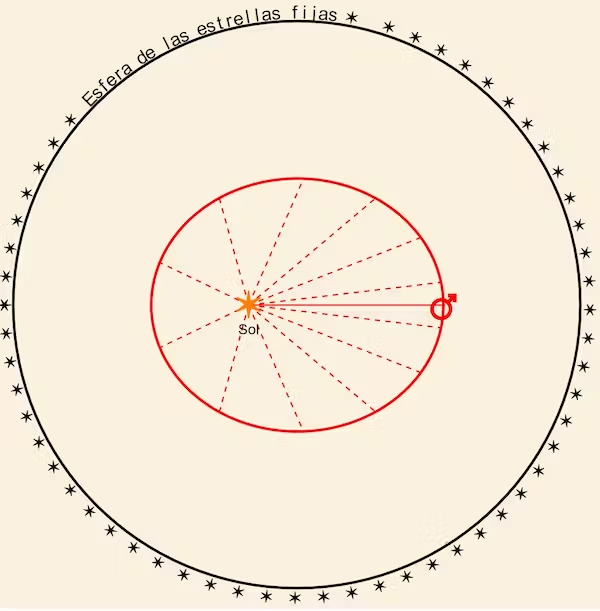
One of the most relevant books in the history of science is On the Revolutions of the Celestial Spheres ( De revolutionibus ), by Nicolas Copernicus (1473-1543). Its publication caused a true scientific revolution. But what does it count and who read it?
Even if the title doesn’t sound familiar to you, you probably remember that it was Copernicus who proposed that the Sun is the center of the universe and not the Earth, as was believed until then, and that the planets revolve around it in circular orbits. That’s precisely what ChatGPT says when asked about Copernicus:
“…He postulated that the planets moved in perfect circles around the Sun…”.
You may also have the idea that the Copernican model was quickly outlawed by the Catholic Church.
However, these ideas are wrong.
The wandering stars
Since ancient times it has been observed that the stars move slowly and regularly. They were supposed to be drawn on a sphere with the Earth in the center: they were the “fixed stars.” But there were also the “wandering stars” (the five visible planets, the Sun and the Moon), which had strange behavior.

Movement of Mars over the course of a year (2016) Source: Prepared by the author
If we observe planets like Mars, Jupiter or Saturn for an entire year, there are periods in which they seem to go faster than the fixed stars, while in others they move in the opposite direction or show strange behavior.
Ptolemy described in his Almagest (2nd century AD) a complicated model that explained this strange behavior. The model was very successful and was applied for at least the next 1,400 years.
Copernicus’s helicentric model arrives, but it does not solve the problem
Ptolemy’s model did not fit into Aristotelian thought, which postulated that all celestial bodies should move in circular orbits around the Earth at a constant speed. Finding a model compatible with Aristotelian belief and that, furthermore, did not use equants – a strange mathematical device invented by Ptolemy – is what probably led Copernicus (1473-1543) to propose his.
Preparing an exhibition that includes an original of the first edition of the book De revolutionibus (1543), I have had the opportunity to study it in detail.
The devil is in the details
In the first chapter the following image appears, which is the one that is frequently reproduced when the Copernicus system is shown.

Solar System according to Copernicus, it is not shown that the planets follow epicycles, which has contributed to transmitting a very simplified image of the real model. Source: Clipping from Book 1 of Revolutionibus. First edition 1543
Apparently it can be inferred that the Earth and the rest of the planets follow circular orbits with the Sun in the center. But this conclusion is a mistake: the devil is in the details. You have to continue reading the book to know them.
Copernicus assumed that each planet moves at a constant speed in a small circle, called an epicycle. The center of the epicycle moves, also at a constant speed, in a larger circle (called deferent), whose center is located at a point close to the Sun.
While the center of the epicycle completes one counterclockwise orbit around the “deferent center,” the planet completes two counterclockwise orbits around the center of the epicycle. This produces an oval orbit with the planet, which decelerates at aphelion (farthest point from the “real Sun”) and accelerates as it approaches perihelion (closest point).
If this is confusing, perhaps the image will clarify it for you. What is clear is that it is not the simple model that is generally associated with the Copernican.

Motion of a planet (except the Earth-Moon system) in the Copernicus model. Author
Copernicus made few astronomical observations himself: he relied mostly on observations he had inherited from antiquity. Some scholars believe that it was the difficulty of matching observations with his model, and not religious doubts, that led her to postpone the publication of his book.
Copernicus’s model solved some problems. For example, it explained in a simple way the retrograde movement of the planets and their order. However, it was at least as complicated as Ptolemy’s and did not make more accurate predictions.
For many astronomical calculations, the Alfonsian Tables based on Ptolemy’s model continued to be used . We would have to wait for Johannes Kepler (1571-1630) and his Rudolfine Tables to surpass them.

Kepler model.
Kepler deduced, from Tycho Brahe’s measurements, that the planets follow elliptical orbits to the Sun at one of the focuses. He eliminated the need to use epicycles and the agreement with observations was perfect. Modern science had definitely begun.
The book that no one read
There was another reason that made the model difficult to accept: De revolutionibus is very cumbersome to read. To understand it you have to have a great deal of patience. Perhaps that explains why many of those who have started it have not made it past the first chapter.
That is what is told – and it coincides with my impression – in The Sleepwalkers (an essential reading book) by Arthur Koestler . In the chapter titled “The book that nobody read” it says that it was an editorial failure, since not even all the copies of the short first edition were sold (if you have one legally obtained, you can surely sell it for more than a million euros) .
Years later, Owen Gingerich , who was a professor at Harvard, set out to disprove Koestler. For years he examined every copy he could of the first edition and deduced that most of the great astronomers of the time had a copy. Even relevant figures such as Philip II had one. A different thing is that they read it.
He also examined common annotations in books from that time, which give us a clue as to the detail with which the book has been read. With some irony, Gingerich published his work with the same title as Koestler’s chapter: The Book Nobody Read . The original of the first edition, which I have been able to examine, lacks annotations.
So, did the Catholic Church ban the Copernicus model? At the University of Salamanca it was recommended reading until 1616, but that is another very interesting story.
Author Bio: J. Guillermo Sánchez León teachers University Institute of Fundamental Physics and Mathematics (IUFFyM) at the University of Salamanca
